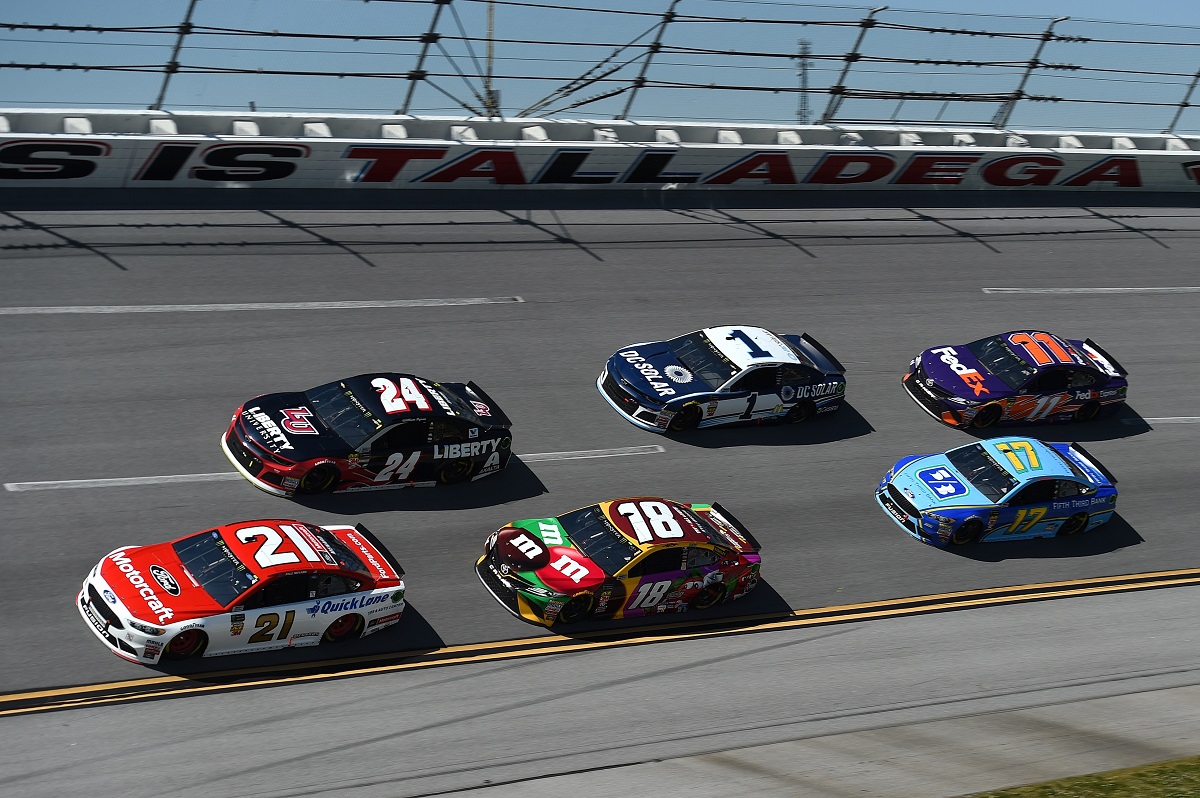
(Photo by Josh Hedges/Getty Images)
The GEICO 500 is in the rear view mirror and I think it’s obvious that a major overhaul to the aerodynamic package at the restrictor plate tracks is sorely needed after what we witnessed today. There was a whopping total of 25 lead changes during the entire event, the lowest total since there were only 20 lead changes in the fall of 1998 when Dale Jarrett drove to victory lane.
We expect to see tons of action and excitement at the restrictor plate tracks. However, something is fundamentally wrong with the cars when they can only produce 25 lead changes the entire event. Also factor in that many of the lead changes during the GEICO 500 came with teams short pitting and using varying pit strategies, creating an inflated number of lead changes. Joey Logano led the final 42 laps of the race. Just last fall there were six different leaders and eight lead changes coming in that same amount of laps, with the winning pass coming on the final lap. Last spring, Ricky Stenhouse, Jr. passed Kyle Busch on the last lap for the win.
With the skew of these cars out of control and the rear ends slammed down on the track like they are going to a Honda Civic car show it’s no wonder why the racing is lacking. The teams in using every available rule to their advantage to make the cars faster have made them nearly impossible to run close to one another. Look, I’m not complaining because there wasn’t enough carnage. I don’t want to see millions of dollars worth of torn up cars littering the track. I don’t need the cars to be five wide across the finish line either. However, it would be nice if we could have a plate package that allowed drivers to pull out and pass one another. I don’t even mind the best cars being rewarded and making it less of a crapshoot as to who wins. When the cars cannot pull out and pass one another though, things need to change. At least the past few years they were able to slam draft and push one another to get big runs. This current rules package doesn’t allow that to happen.
I hated every second of the tandem drafting when that became a thing in 2010 mostly because each car was hooked to one other car the entire race. If the cars could have tandem drafted and mixed up “partners” as the races played out that would have been much more tolerable. But, even as much as I detest tandem drafting, that would be a welcome change to what we had today. Before today, the average number of lead changes over the past ten years at Talladega was 50.25 lead changes per race. If you’d like to throw out the tandem races the average is still 43.64. But that number has been skewed down by the six prior races at Talladega which had 30, 26, 31, 37, 30, and 27 lead changes respectively. I hope that puts today’s 25 lead changes into perspective.
This year’s running of the Daytona 500 only produced 24 lead changes, so it’s not just Talladega. NASCAR better look into the aerodynamic package on these cars before the Pepsi 400 in July or we could be in for another lackluster event.




